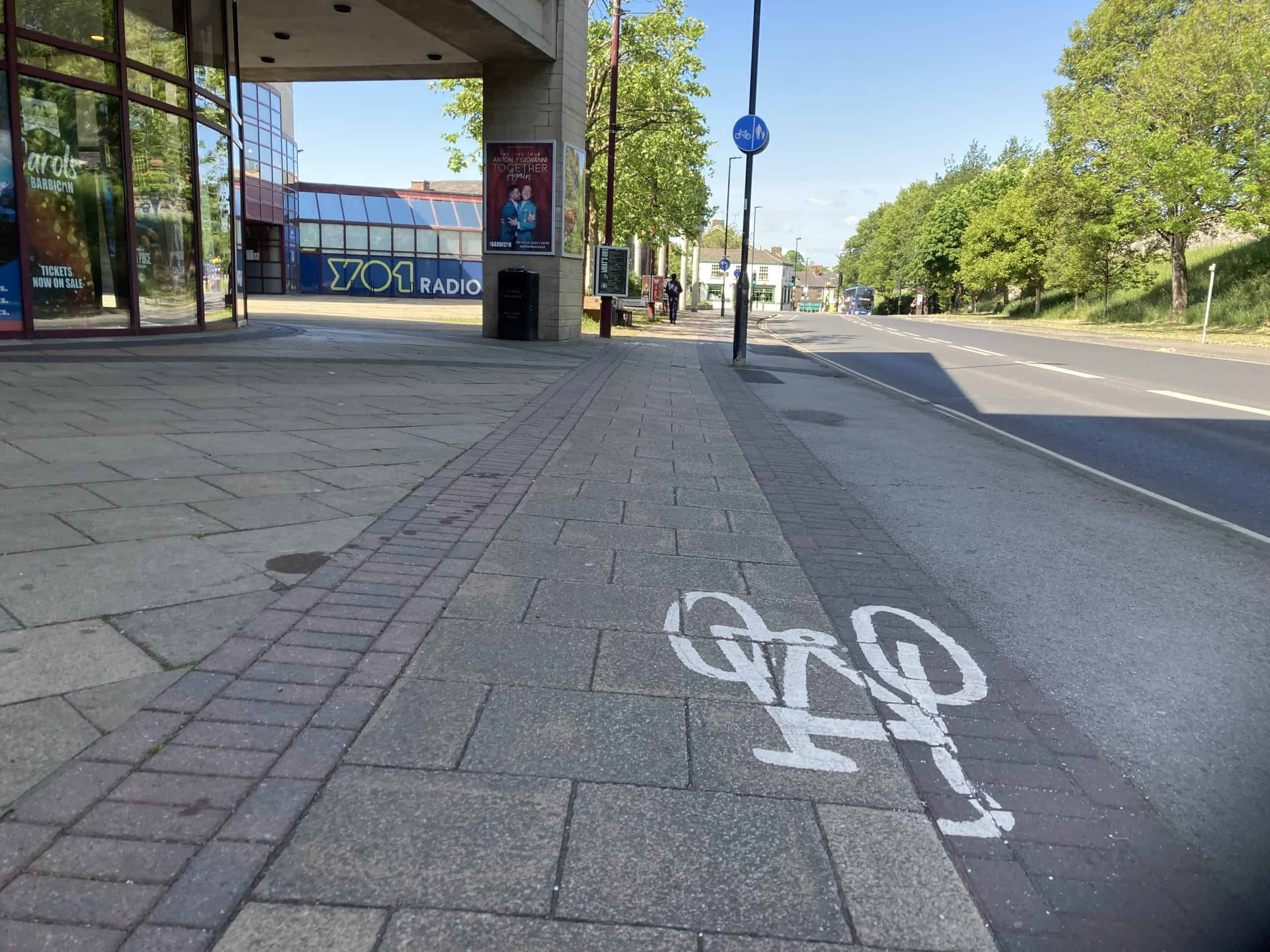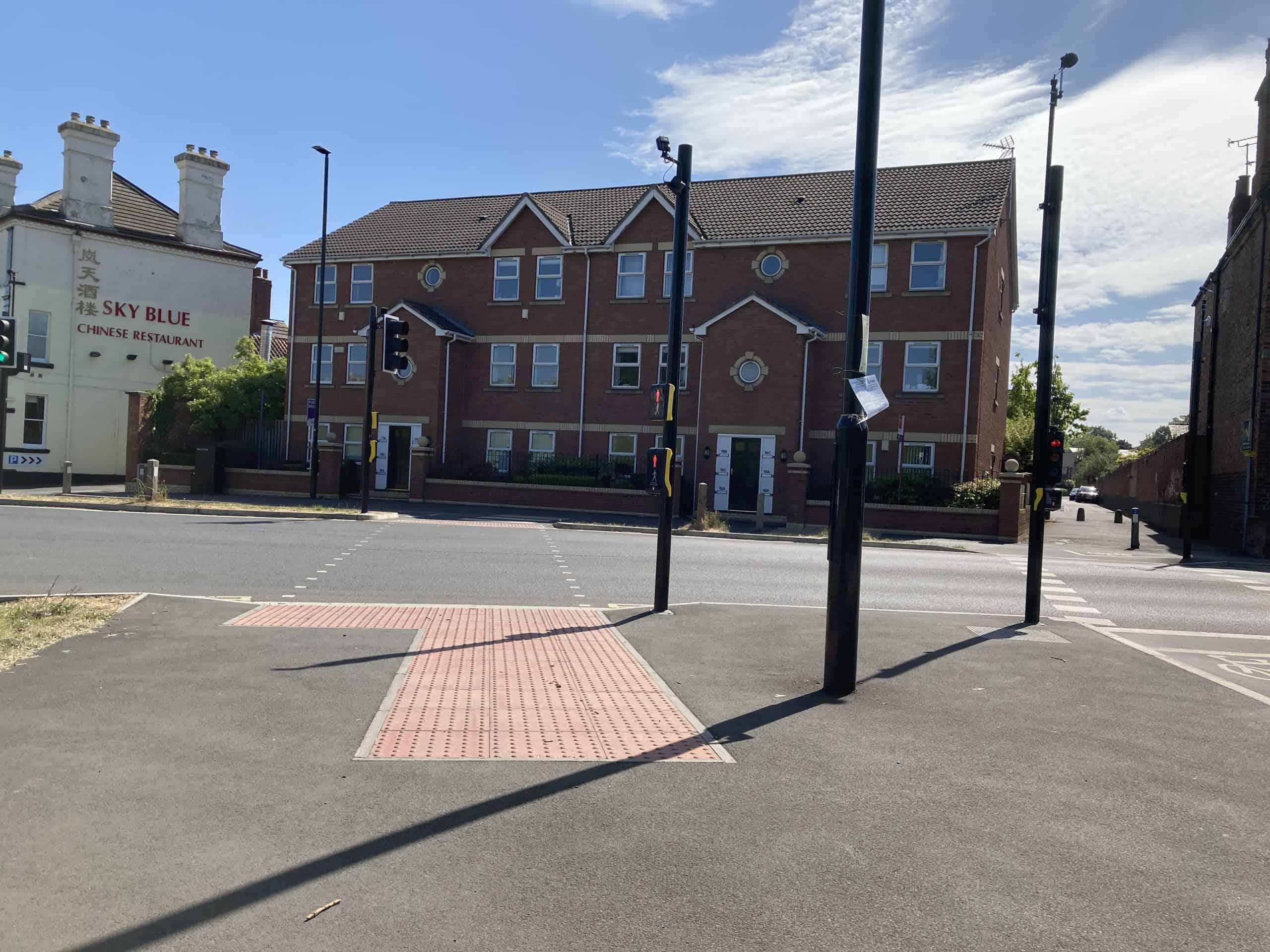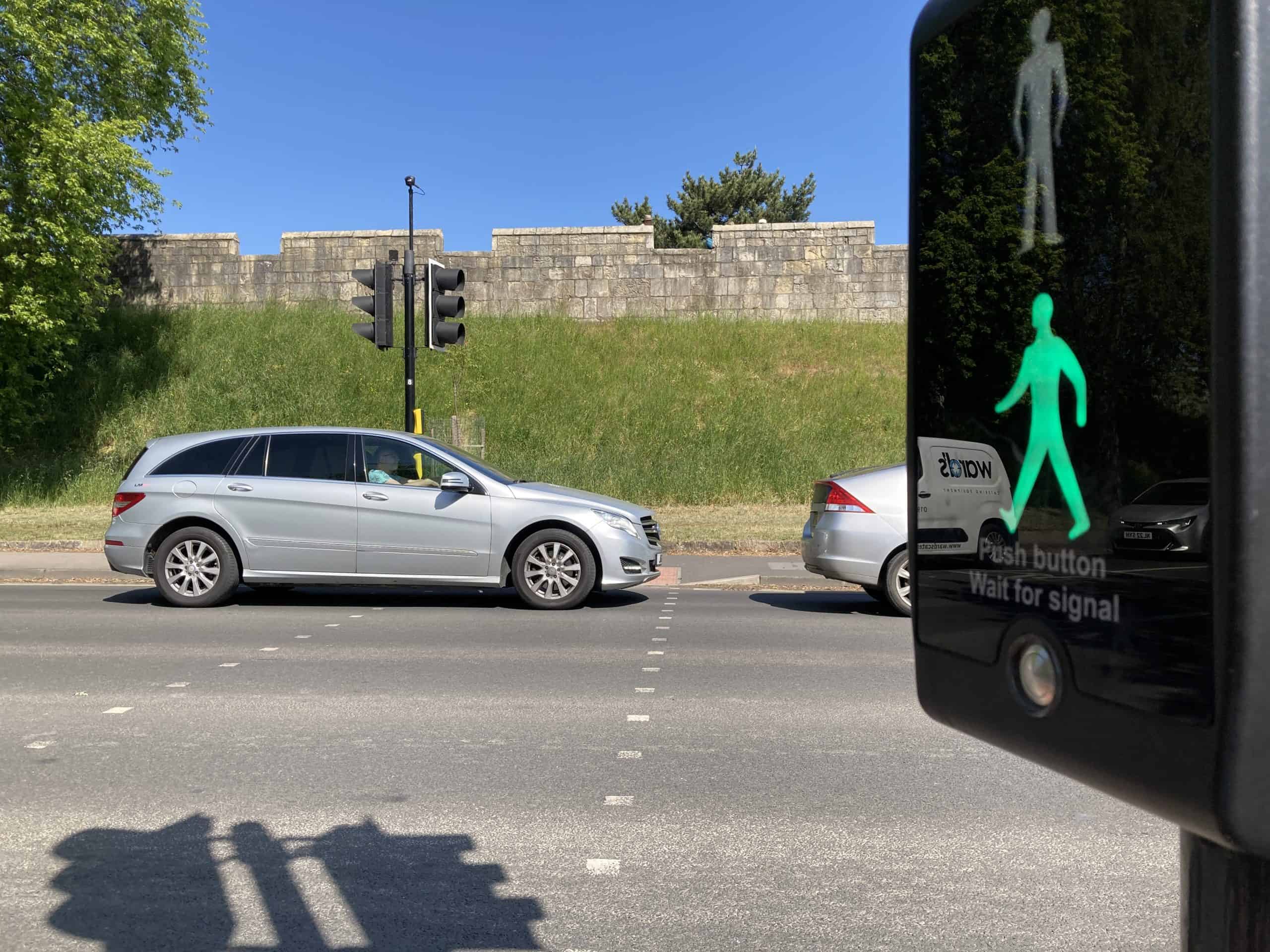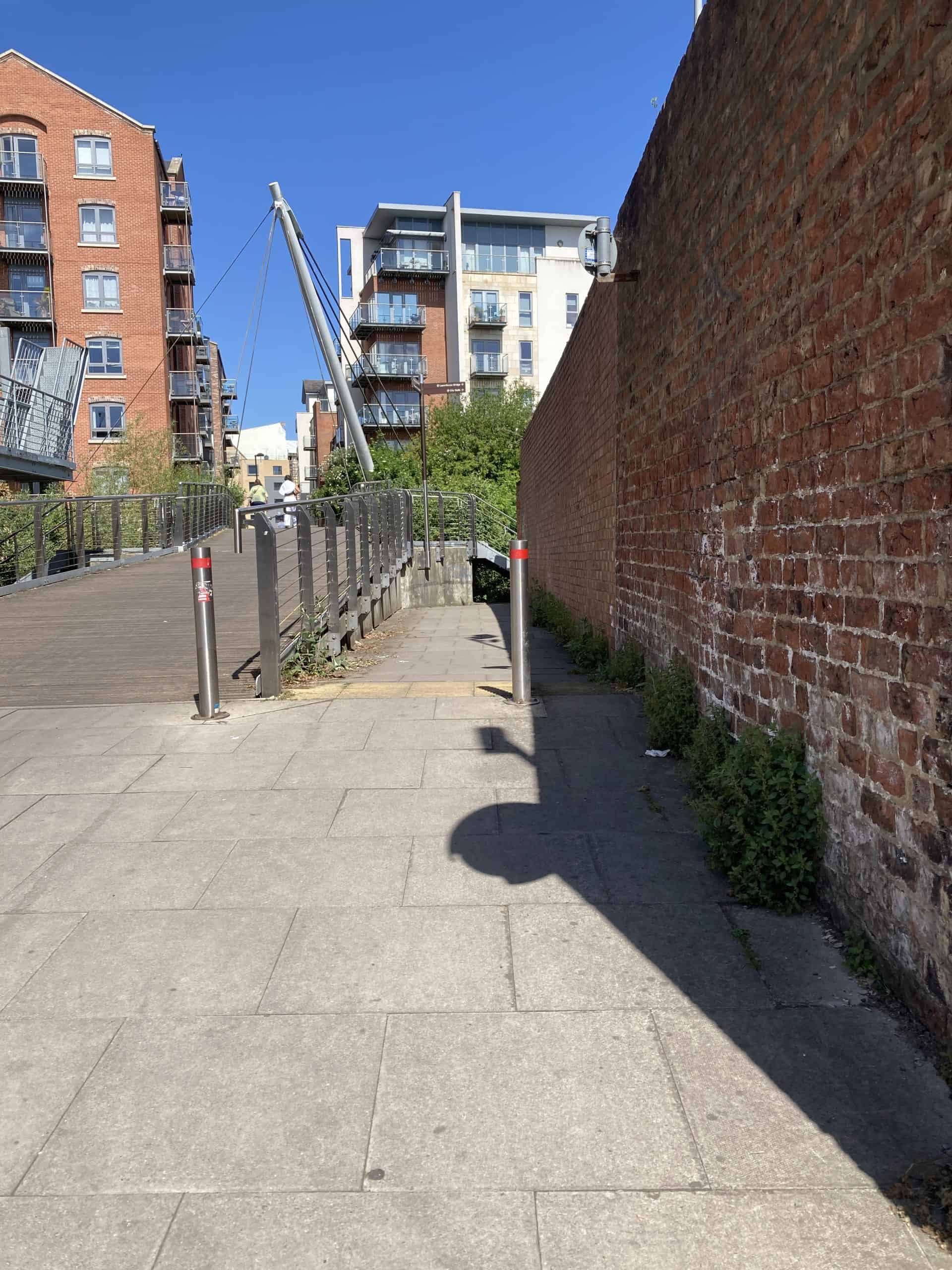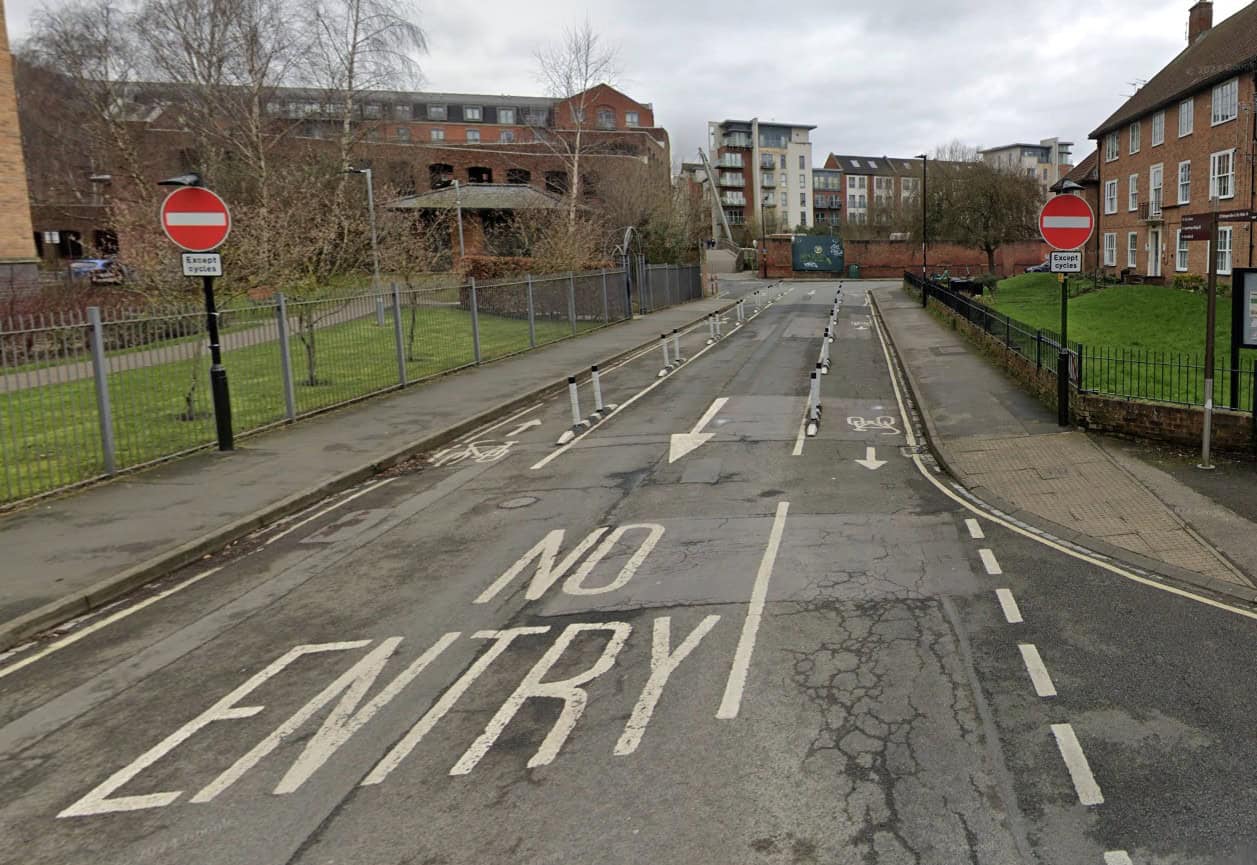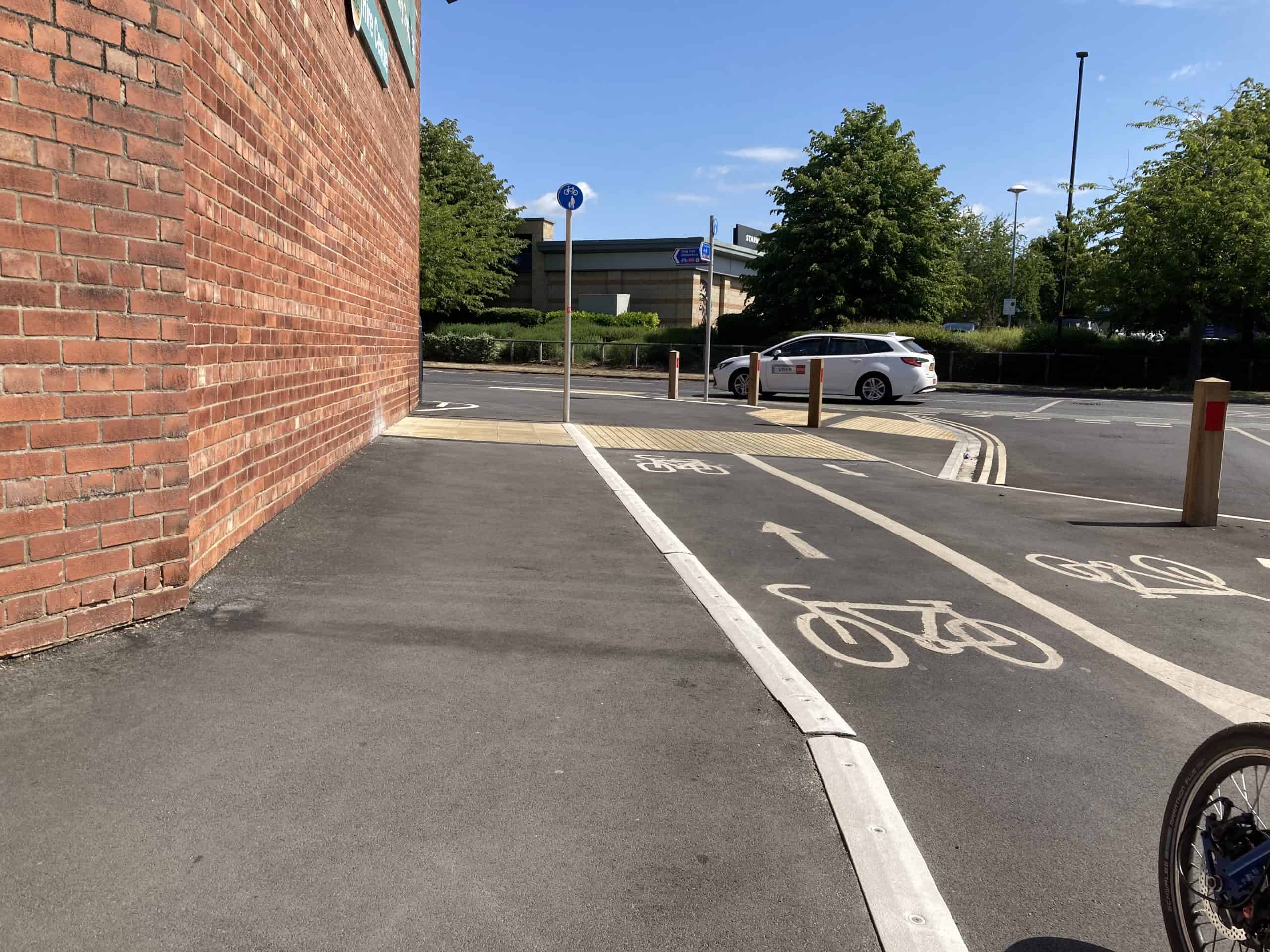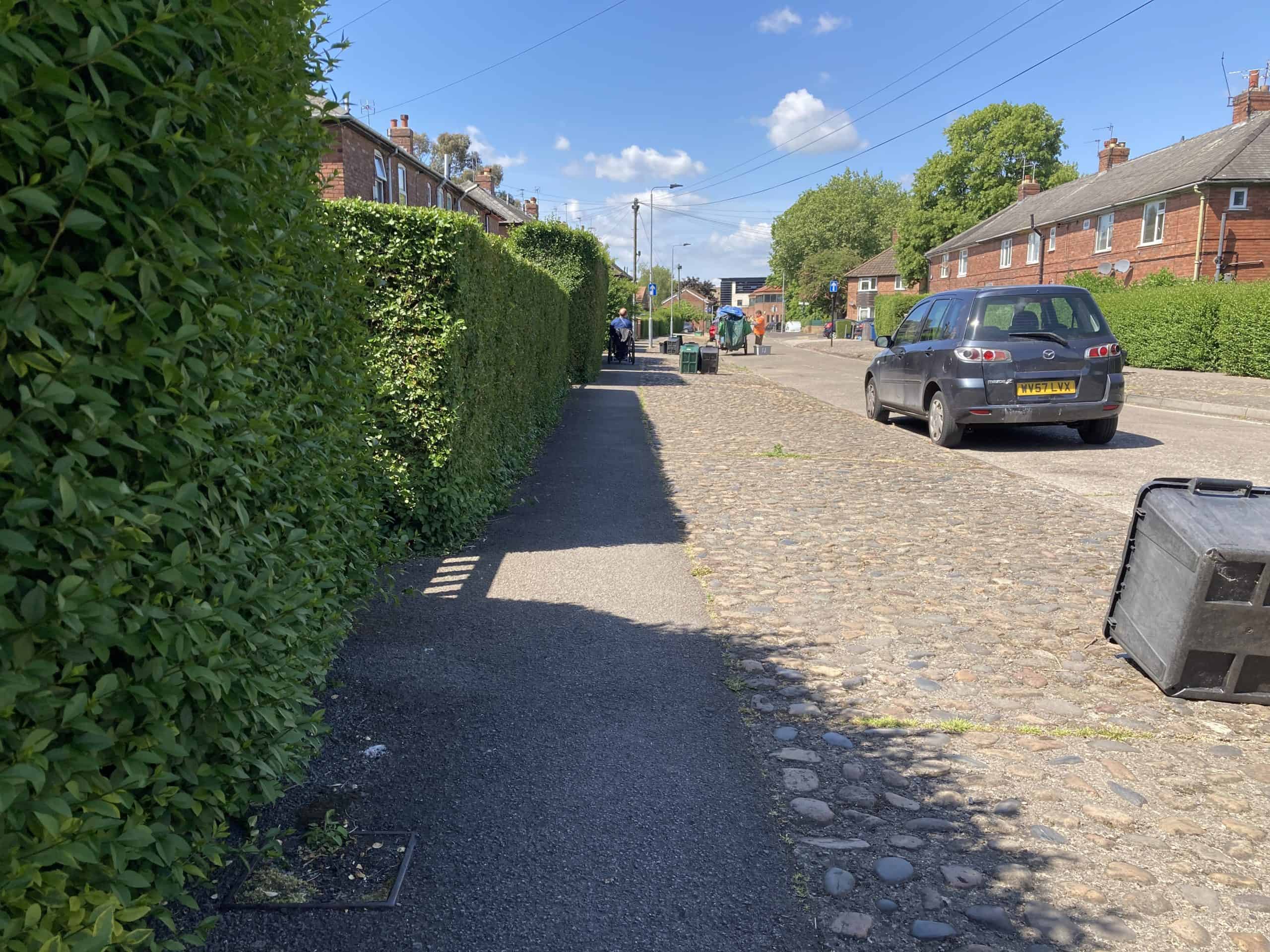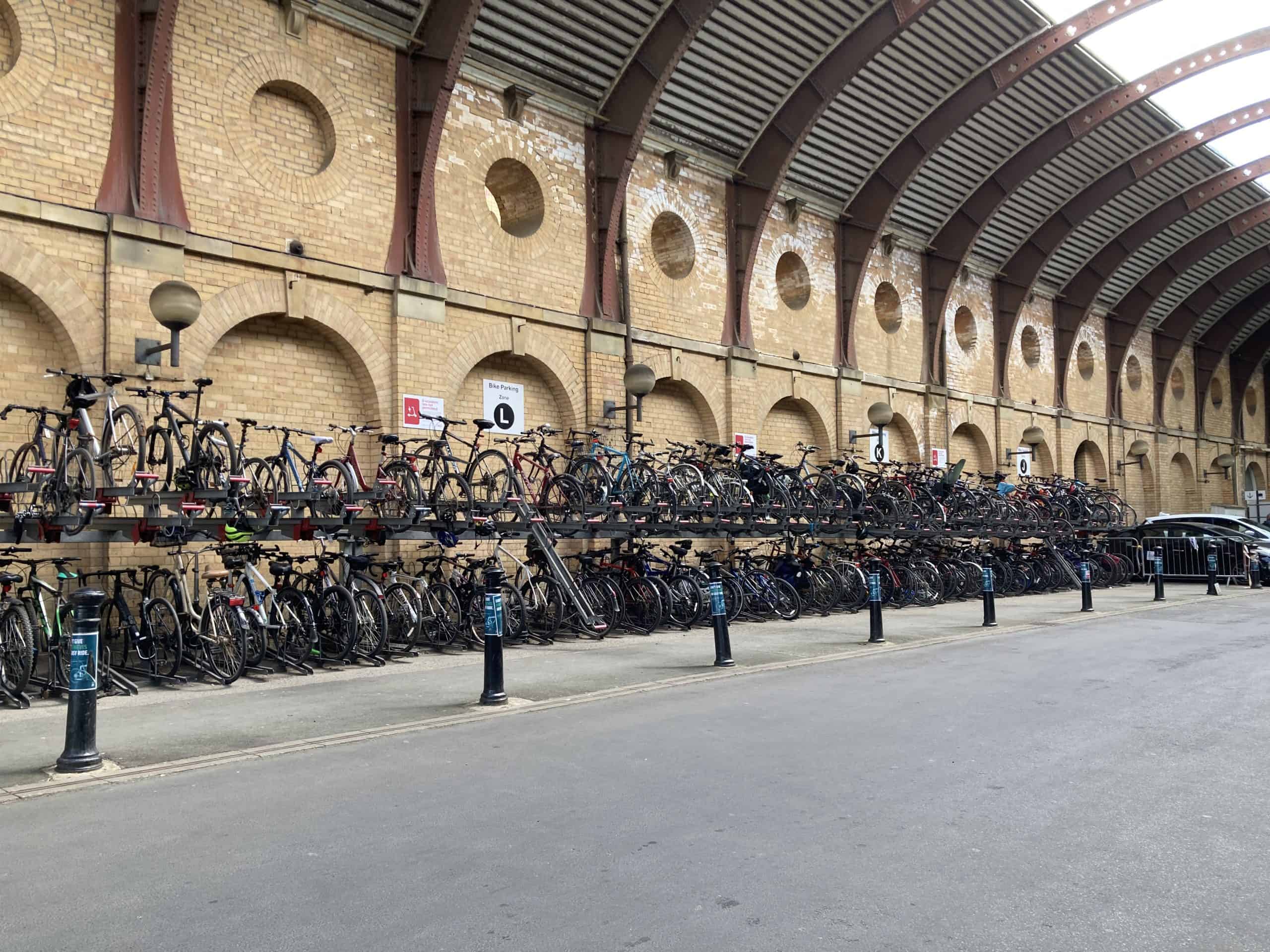This handout has been developed for Active City York 2025
Download this handout as a Word document
Download this handout as a pdf
Share this handout with a QR code:

Wheels for Wellbeing call for designers and decision makers to use good practice guidance and inclusive consultation to ensure our public spaces provide equitable accessible to everyone.
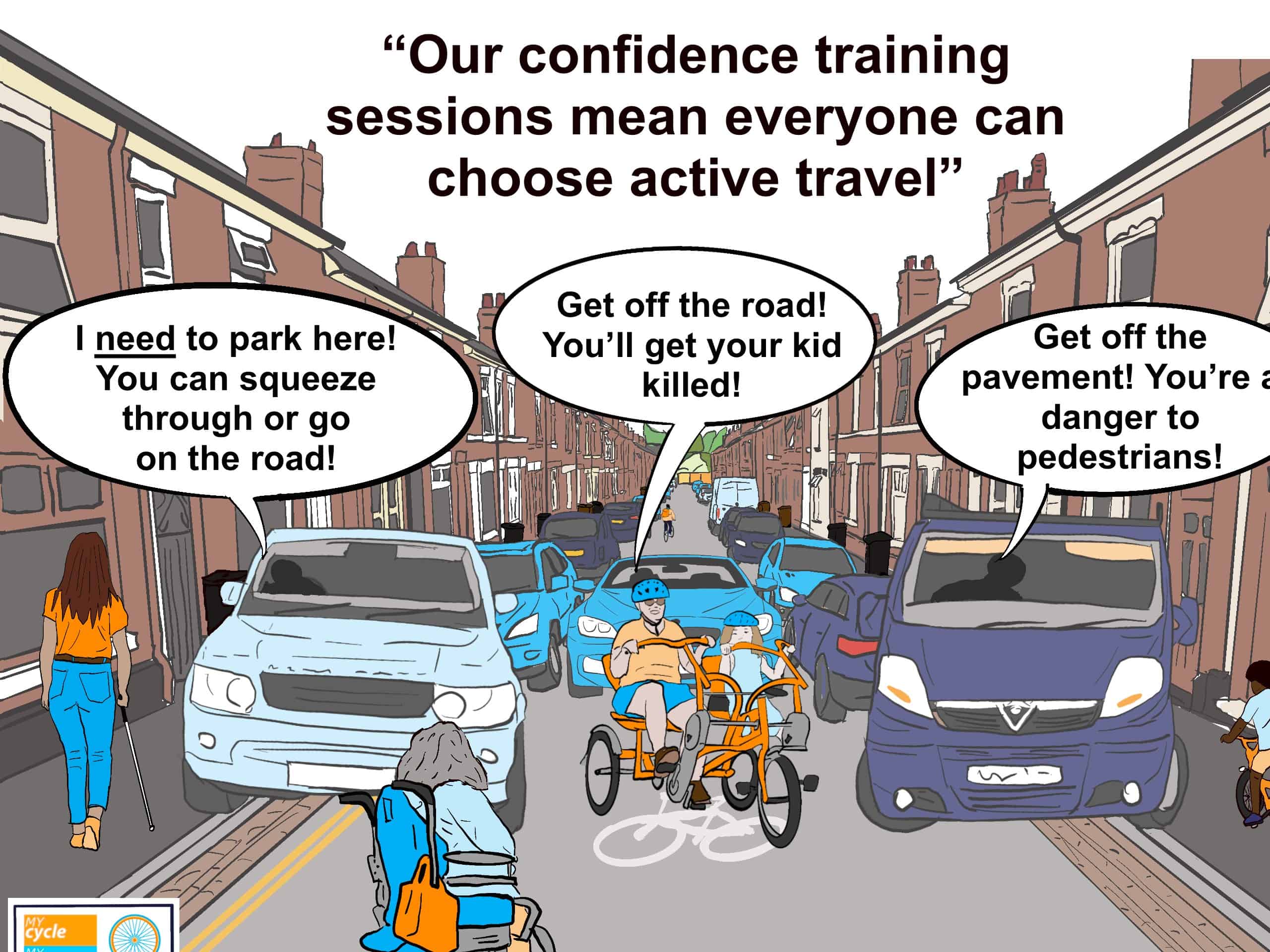
Kate Ball – Wheels for Wellbeing Campaigns and Policy Lead
Workshop Route
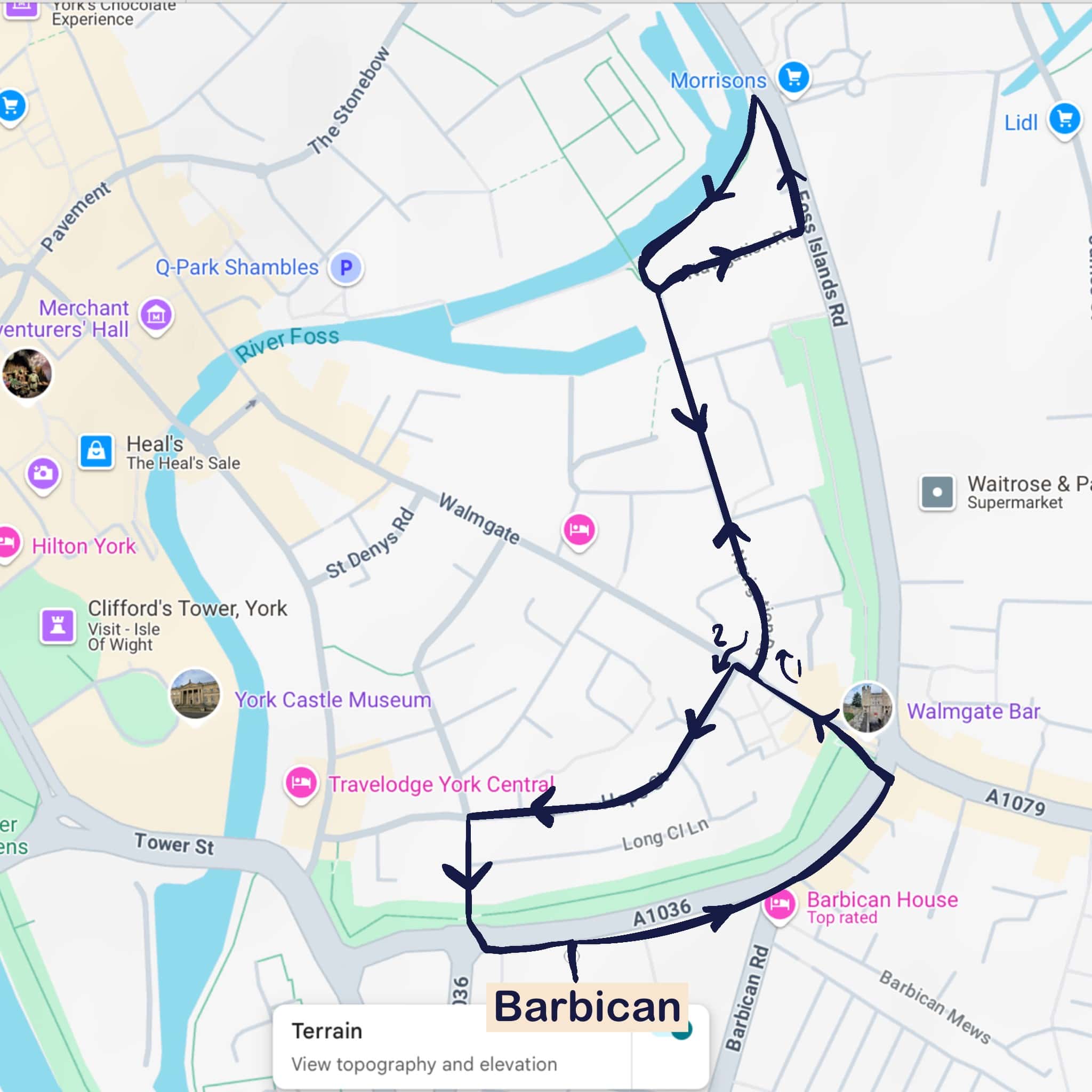
Accessibility principles and practical applications
Overview
In this workshop we’re looking at real-world application of a range of accessibility principles
This handout contains some photos from the walk route. It is intended as an aid to considering factors discussed on the route, but shouldn’t be essential for most people.
The online version available via link and QR code on the cover has alt text on the images.
Principles to bear in mind
- Equality of access to public spaces for Disabled people and others with protected characteristics – Equality Act (2010) including the Public Sector Equality Duty and the United Nations Convention on the Rights of Persons with Disabilities.
- Legal, regulatory and social recognition of mobility aids – including how present regulations restrict Disabled people’s access to society.
- Accompanied groups – people need to move in groups of two or more to make essential journeys. Accompanied groups walking/wheeling and cycling can no more split up than the same people could when travelling in a car, van or bus.
- Social safety – how safe will a space or route be at all hours of day and night, for all people with all protected characteristics? What can make spaces safer?
- Physical safety – we often consider safety of people walking/wheeling and cycling from drivers. What about other hazards? What about when people aren’t using a space in the way designers intended? – and why might people be using spaces in unintended ways?
- Coherence and wayfinding – how safe and easy is a space for Disabled people to navigate, including negotiating priority of movement with other users of a space?
Pictures from workshop route
